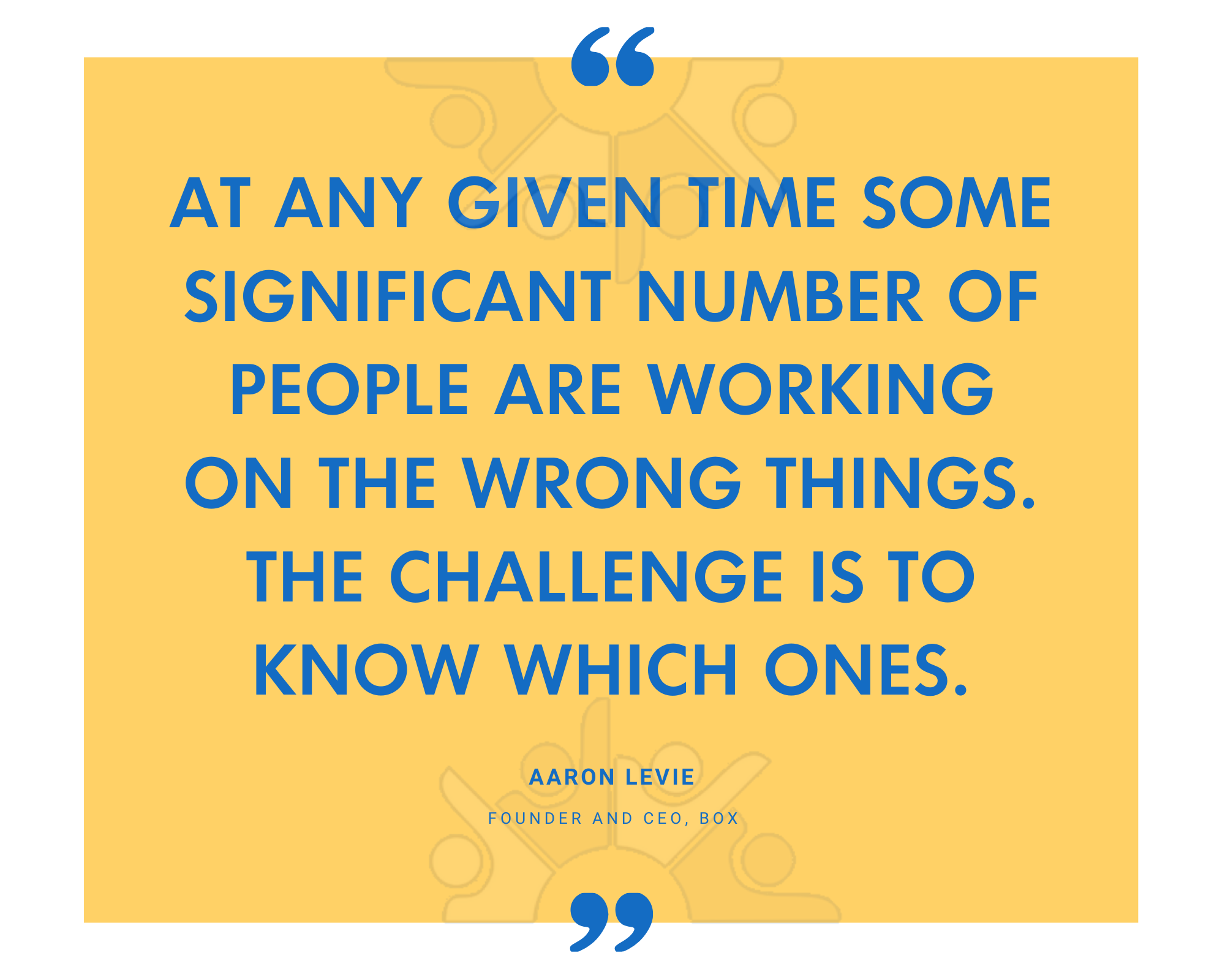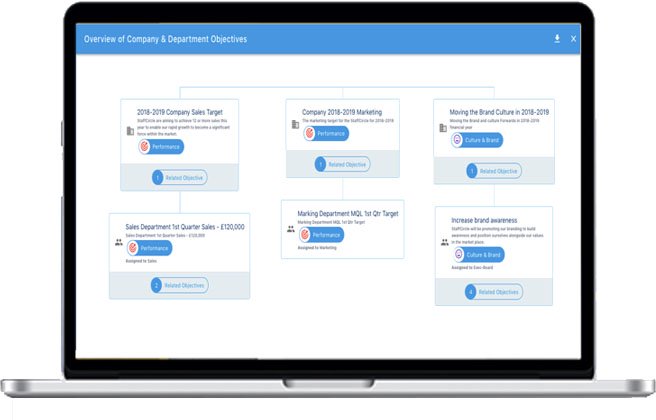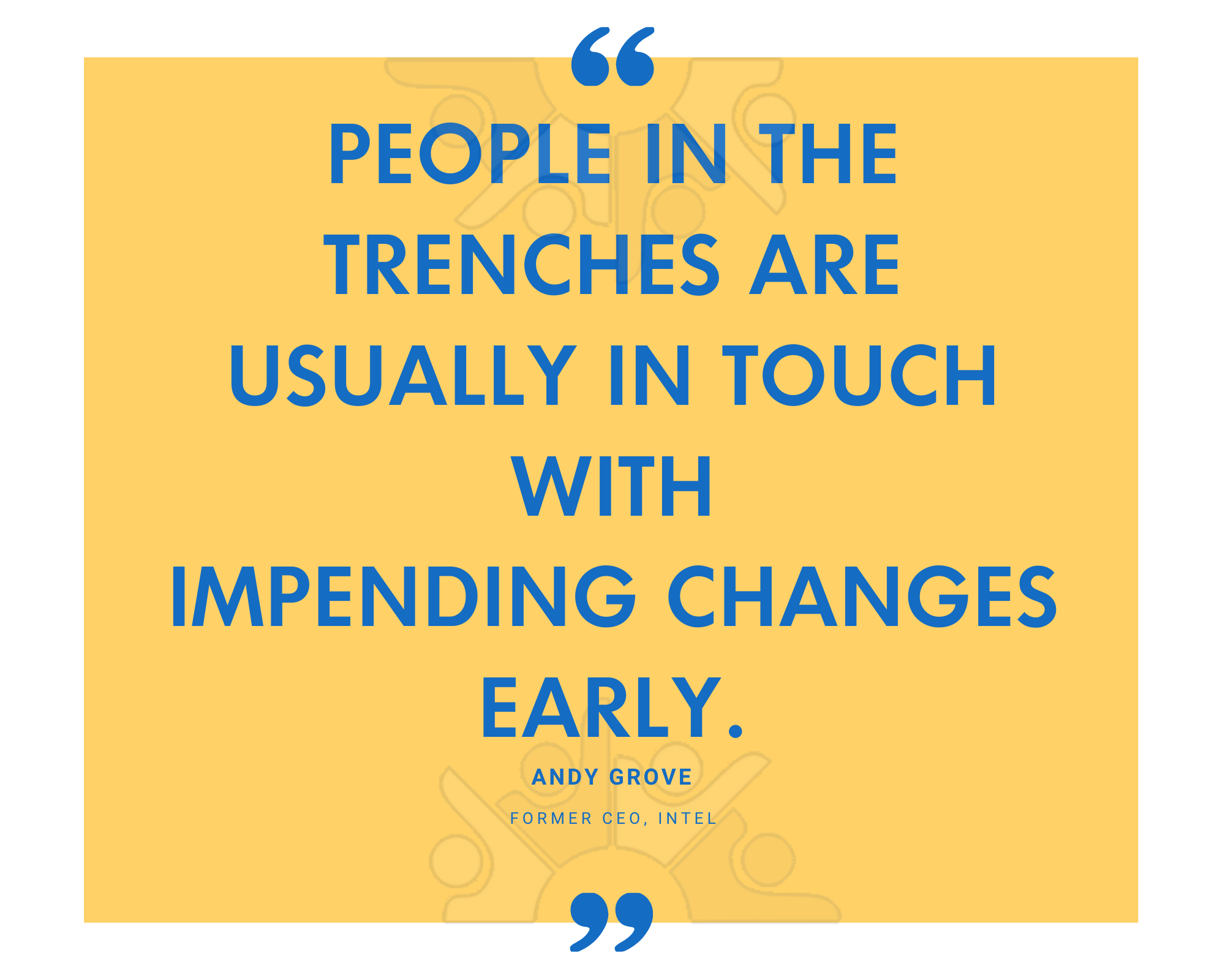Some of the major obstacles for companies hitting their big targets come from a lack of transparency and alignment between employees and teams. But as studies such as Robert Kaplan and D. P. Norton’s The Strategy-Focused Organization for Harvard Business School have shown, only 7% of employees “fully understand their company’s business strategies and what’s expected of them in order to help achieve the common goals.”
Let’s see how you can better align your teams and improve transparency to help ensure you hit those important goals.

Amelia Merrill, HR leader at California risk management agency RMS, described the problem with goal management: “We’ve got a lot of stuff going on. We’ve got people in multiple offices in multiple time zones – some doing parallel work, some doing work together. And it’s really hard for employees to see what they should work on first. Everything seems important; everything seems urgent.”
Using a comprehensive goal-tracking tool is essential for preventing overlap between employees and teams within a company from working effectively towards a shared goal. Providing a platform on which employees can track, post comments and offer advice on listed goals improves work rates and increases the likelihood of meeting goals.
Setting transparent objectives and key results helps to bring a level of connection and bind team efforts and departmental projects together. Combining traditional top-down goals set at the executive level with bottom-up goals can supercharge your company’s performance even further.
Cascading objectives and key results
Cascading objectives and key results from the executive level down through the company is a great way to give your goals a solid backbone and ensure that they are aligned with the company’s core principles and objectives.
Beginning with the top-level executive goals, these can then be cascaded throughout the company to encompass the various heads of departments and the individuals these departments are comprised of, providing all levels with a clear visual of how their tasks are aligned with the bigger picture.

Try to avoid relying too rigidly on cascading OKRs. Too much emphasis on top-down OKRs can lead to a loss of agility, as employees wait for instructions to trickle down from above and resist fluid goal-setting. Goals can become inflexible and overburden employees as they rush to try and keep their goals aligned.
They are also potentially ineffective for boosting horizontal alignment across departments and can hinder contributions from your company’s frontline workers who may hesitate to share ideas and suggestions.
To counteract the potential pitfalls of cascading OKRs, integrate them with bottom-up goals.

Cascading from the bottom up

The transparent nature of OKRs gives them a great deal of leeway when it comes to modifying them based on input throughout your company. Former head of People Operations at Google Laszlo Bock explained the company’s approach in his book Work Rules!
“Having goals improves performance. Spending hours cascading goals up and down the company, however, does not. We have a market-based approach, where over time our goals all converge because the top OKRs are known and everyone else’s OKRs are visible. Teams that are grossly out of alignment stand out, and the few major initiatives that touch everyone are easy enough to manage directly.”
Understanding the problems your company faces and the potential for innovation doesn’t come from fixed positions, and employees working, for example, in the sales department are going to pick up on fluctuations in the market or shifting customer demands before those working on research and development or production.
Using effective OKRs via a comprehensive performance management tool to track, update and register comments on keeps teams and employees aligned while allowing your company to stay ahead of the curve, recognising what works and what needs to change in real-time.
As Bock explains, “Transparency creates very clear signals for everyone. You kick off virtuous cycles that reinforce your ability to actually get your work done. And the management tax is zero – it’s amazing.”





